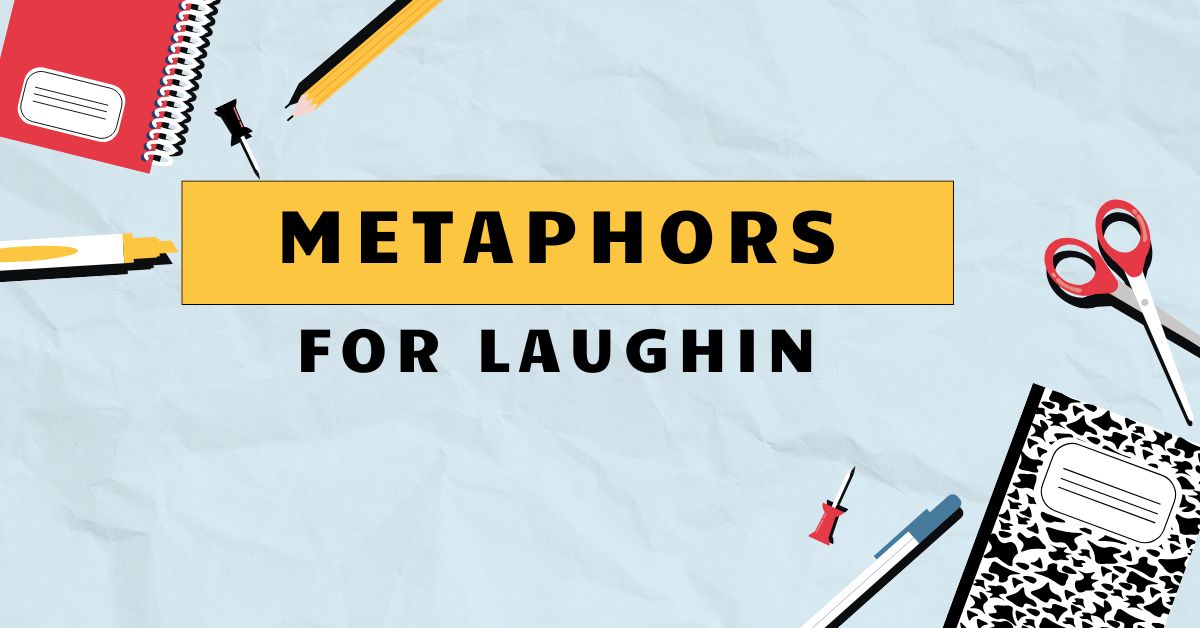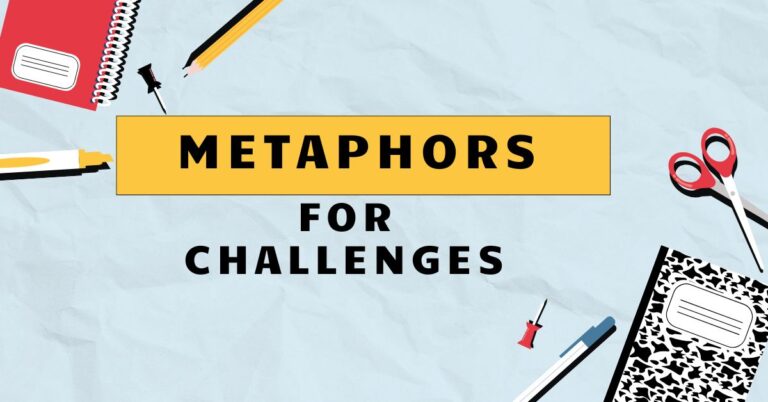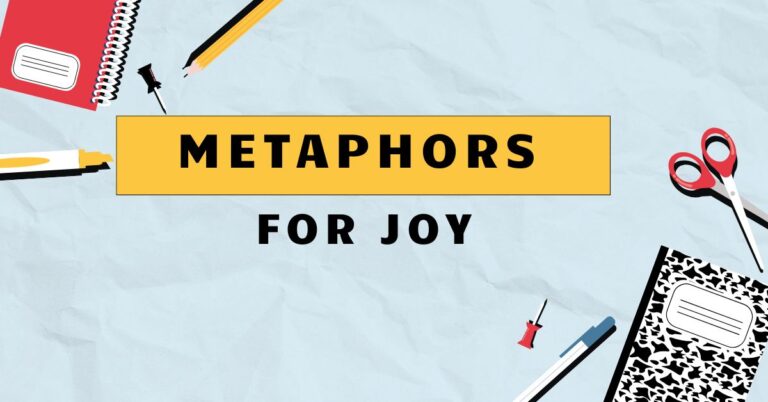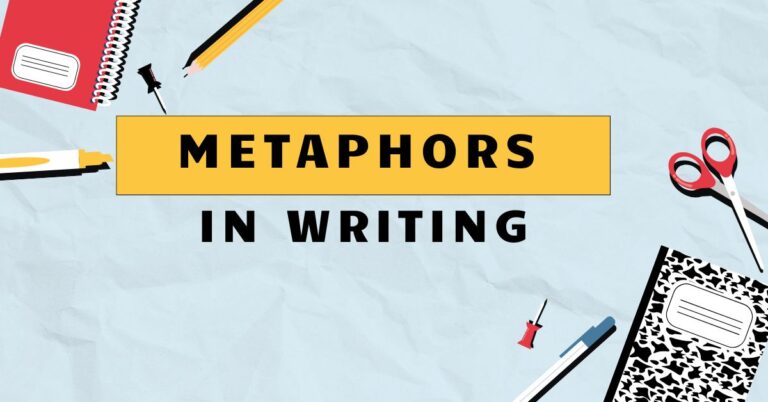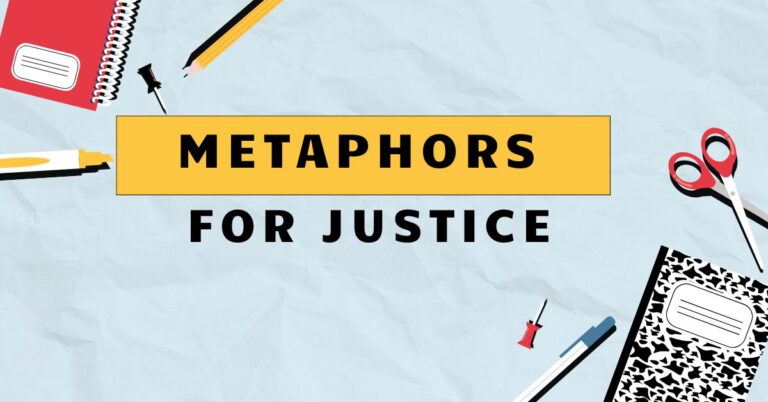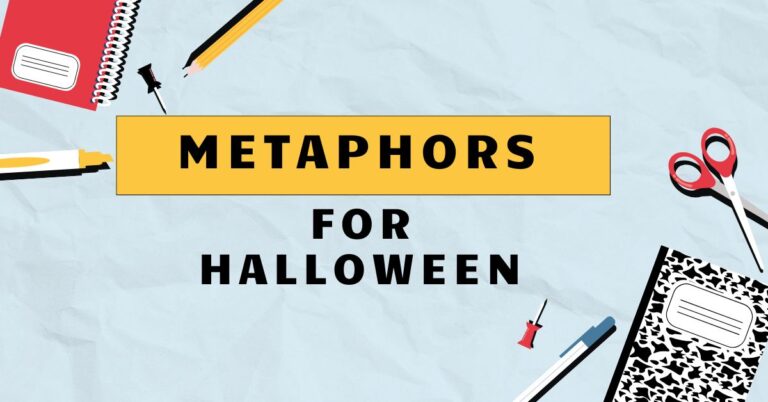49 Metaphors for Laughing: Expressing Joy Creatively
Laughing is a universal human experience, a physical manifestation of joy, amusement, or relief. However, simply stating “He laughed” can sometimes feel inadequate to convey the depth and nuances of this expression.
Metaphors offer a powerful tool to enrich our descriptions of laughter, allowing us to paint vivid pictures and evoke stronger emotions in our readers or listeners. Understanding these metaphors not only enhances our comprehension of figurative language but also empowers us to use English more creatively and effectively.
This article delves into the world of metaphors for laughing, exploring their definitions, structures, types, and usage, providing ample examples and practical exercises to master this aspect of English grammar.
This comprehensive guide is designed for English language learners of all levels, from beginners seeking to expand their vocabulary to advanced speakers aiming to refine their expressive abilities. By exploring the diverse range of metaphors used to describe laughter, you will gain a deeper appreciation for the richness and flexibility of the English language.
Table of Contents
- Definition of Metaphors for Laughing
- Structural Breakdown of Laughing Metaphors
- Types and Categories of Laughing Metaphors
- Examples of Metaphors for Laughing
- Metaphors Describing the Sound of Laughter
- Metaphors Describing the Intensity of Laughter
- Metaphors Describing the Effect of Laughter
- Animalistic Metaphors for Laughter
- Physical Reaction Metaphors for Laughter
- Usage Rules for Metaphors for Laughing
- Common Mistakes When Using Laughing Metaphors
- Practice Exercises
- Advanced Topics: Nuances and Cultural Context
- Frequently Asked Questions (FAQ)
- Conclusion
Definition of Metaphors for Laughing
A metaphor, in its essence, is a figure of speech that directly compares two unrelated things, asserting that oneisthe other to create a vivid image or understanding. When applied to laughter, metaphors move beyond the literal act of laughing, using comparisons to other objects, actions, or concepts to describe its qualities, intensity, or effect.
Instead of merely stating that someone laughed, a metaphor might suggest that their laughter was a “torrent,” a “song,” or a “balm,” adding layers of meaning and emotional resonance.
The function of these metaphors is multifaceted. They serve to amplify the emotion associated with laughter, making it more palpable to the audience.
They also provide a more nuanced understanding of the laughter itself, conveying whether it was joyous, mocking, nervous, or something else entirely. Furthermore, metaphors engage the imagination, prompting the reader or listener to actively participate in constructing the meaning of the description.
By understanding the function of metaphors, we can appreciate how they enrich our language and allow us to communicate more effectively.
The context in which a metaphor is used is crucial. The appropriateness of a particular metaphor depends on the situation, the tone of the communication, and the relationship between the speaker and the audience.
For example, describing someone’s laughter as “a hyena’s cackle” might be suitable in a humorous or critical context, but it would be inappropriate in a situation that calls for empathy or respect. Therefore, careful consideration of the context is essential when choosing and interpreting metaphors for laughter.
Structural Breakdown of Laughing Metaphors
Metaphors for laughing, like all metaphors, typically consist of two key elements: thetenorand thevehicle. The tenor is the subject being described (in this case, laughter), while the vehicle is the object or concept to which it is being compared.
The connection between the tenor and the vehicle is not literal but rather based on shared qualities or characteristics. This shared characteristic is often referred to as thegroundof the metaphor.
Consider the metaphor “Her laughter was a bubbling brook.” Here, the tenor is “laughter,” and the vehicle is “a bubbling brook.” The implied ground is the sound and joyful nature of both laughter and a brook. The structure can be further analyzed by understanding the implicit meaning or the comparison being made.
In this case, the metaphor suggests that the laughter is light, cheerful, and flowing.
The effectiveness of a metaphor depends on the strength and clarity of the connection between the tenor and the vehicle. A well-chosen vehicle will resonate with the audience and evoke a clear and compelling image.
Conversely, a poorly chosen vehicle can be confusing or ineffective. Understanding the structural elements of a metaphor allows us to appreciate the artistry involved in creating and interpreting figurative language.
Analyzing the structure of metaphors also helps us to understand how the different elements work together to create meaning.
Types and Categories of Laughing Metaphors
Metaphors for laughing can be categorized based on the aspects of laughter they emphasize. Here are some common types:
Sound-Based Metaphors
These metaphors focus on the auditory qualities of laughter, comparing it to various sounds. They might describe laughter as a melody, a roar, or a chime, depending on its tone and volume.
Intensity-Based Metaphors
These metaphors highlight the strength or force of laughter, comparing it to powerful natural phenomena or actions. Examples include describing laughter as a flood, an explosion, or a wave.
Effect-Based Metaphors
These metaphors emphasize the impact of laughter on the person laughing or on those around them. Laughter might be described as a healing balm, a contagious disease, or a burst of sunshine.
Animalistic Metaphors
These metaphors compare laughter to the sounds or behaviors of animals. Examples include describing laughter as a hyena’s cackle, a bird’s trill, or a lion’s roar.
Physical Reaction Metaphors
These metaphors focus on the physical manifestations of laughter, such as shaking, tears, or gasping for breath. Laughter might be described as a tremor, a downpour, or a hurricane.
Examples of Metaphors for Laughing
The following tables provide examples of metaphors for laughing, organized by category. Each example includes an explanation of the comparison being made.
Metaphors Describing the Sound of Laughter
This table focuses on metaphors that describe the sound of laughter, drawing comparisons to various auditory experiences.
| Metaphor | Explanation |
|---|---|
| Her laughter was a tinkling bell. | The laughter is light, clear, and musical, like the sound of a small bell. |
| His laughter echoed like a distant chime. | The laughter is resonant and lingering, similar to the fading sound of a chime. |
| Their laughter was a symphony of joy. | The laughter is harmonious and complex, like a well-composed piece of music. |
| The child’s laughter was a high-pitched squeak. | The laughter is sharp and shrill, like the sound of a squeak. |
| Her laughter resonated like a deep cello. | The laughter is rich and full, similar to the sound of a cello. |
| His laughter was a staccato burst. | The laughter is short, abrupt, and punctuated, like staccato notes in music. |
| The laughter of the crowd was a cacophony. | The laughter is loud, discordant, and overwhelming, like a jumble of unpleasant sounds. |
| Her laughter was a gentle murmur. | The laughter is soft, quiet, and soothing, like a low, continuous sound. |
| His laughter was a booming baritone. | The laughter is deep, resonant, and powerful, like a male singing voice. |
| Their laughter was a chorus of delight. | The laughter is collective, harmonious, and expressive of great joy, like a group singing together. |
| Her laughter was a trill, like a bird’s song. | The laughter is high-pitched, rapid, and melodious, like the sound a bird makes. |
| His laughter was a rumbling bass. | The laughter is low-pitched, deep, and resonant, similar to low-frequency sounds. |
| Their laughter was a discordant note in the serious meeting. | The laughter is out of place and jarring, like a dissonant sound in a somber environment. |
| Her laughter was a peal of bells. | The laughter is loud, clear, and joyous, like the sound of many bells ringing together. |
| His laughter was a soft hum. | The laughter is quiet, gentle, and continuous, like a low, steady sound. |
| Their laughter was a wave of sound that filled the room. | The laughter is powerful and all-encompassing, like a surge of noise that inundates the space. |
| Her laughter was a musical cascade. | The laughter is flowing, melodious, and abundant, like a series of notes cascading down. |
| His laughter was a sharp crack echoing in the silence. | The laughter is sudden, loud, and distinct, like a breaking sound that punctuates stillness. |
| Their laughter was a low, throaty chuckle. | The laughter is deep, guttural, and amused, originating from the throat. |
| Her laughter was a high-pitched giggle. | The laughter is light, childish, and nervous, expressed in short, quick bursts. |
| His laughter was a sonorous roar. | The laughter is full, deep, and loud, like the sound of a powerful animal. |
| Their laughter was a melodic round, each voice joining in turn. | The laughter is harmonious and sequential, with each participant contributing to the overall sound. |
Metaphors Describing the Intensity of Laughter
This table provides examples of metaphors that describe the intensity of laughter, using comparisons to emphasize its strength and force.
| Metaphor | Explanation |
|---|---|
| Her laughter was a torrent of mirth. | The laughter is abundant, overflowing, and uncontrollable, like a rushing stream. |
| His laughter exploded like a firework. | The laughter is sudden, intense, and spectacular, like a burst of light and sound. |
| Their laughter surged like a tidal wave. | The laughter is powerful, overwhelming, and unstoppable, like a massive ocean wave. |
| Her laughter rippled through the room. | The laughter is gentle, spreading, and pervasive, like a wave moving across a surface. |
| His laughter erupted from deep within. | The laughter is forceful, spontaneous, and originating from a profound source of amusement. |
| Their laughter was a volcano of joy. | The laughter is explosive, powerful, and originating from a deep, internal source. |
| Her laughter was a spark that ignited the room. | The laughter is contagious, inspiring, and causing others to join in. |
| His laughter was a hurricane of amusement. | The laughter is chaotic, forceful, and overwhelming, like a destructive storm. |
| Their laughter cascaded down like a waterfall. | The laughter is abundant, flowing, and continuous, like water falling from a height. |
| Her laughter was a gentle breeze. | The laughter is light, soft, and refreshing, like a gentle current of air. |
| His laughter was a roaring fire. | The laughter is intense, passionate, and consuming, like a large, uncontrolled blaze. |
| Their laughter was a thunderclap of amusement. | The laughter is sudden, loud, and startling, like a loud crash of thunder. |
| Her laughter was a trickle at first, then a flood. | The laughter starts gently and then becomes abundant and uncontrollable. |
| His laughter was a seismic shift in the atmosphere. | The laughter is transformative, powerful, and changing the mood of the environment. |
| Their laughter was a geyser of delight. | The laughter is sudden, forceful, and abundant, like a burst of hot water from the earth. |
| Her laughter was a soft rain of amusement. | The laughter is gentle, pervasive, and comforting, like a light, soothing rain. |
| His laughter was a raging river of glee. | The laughter is powerful, unstoppable, and filled with great joy. |
| Their laughter was a tidal wave of mirth. | The laughter is overwhelming, powerful, and filled with amusement. |
| Her laughter was a gentle stream of amusement. | The laughter is calm, continuous, and filled with lighthearted joy. |
| His laughter was a resounding echo of joy. | The laughter is strong, clear, and reflective of deep happiness. |
| Their laughter was a supernova of delight. | The laughter is brilliant, intense, and extraordinarily joyful. |
| Her laughter was a controlled burn of humor. | The laughter is measured, contained, yet still full of amusement. |
Metaphors Describing the Effect of Laughter
This table includes metaphors that describe the effect of laughter, focusing on its impact on the person laughing or on those around them.
| Metaphor | Explanation |
|---|---|
| Her laughter was a balm to his wounded spirit. | The laughter is soothing, healing, and comforting to someone who is emotionally hurt. |
| His laughter was a contagious disease. | The laughter is easily spread, causing others to laugh as well. |
| Their laughter was a burst of sunshine in the room. | The laughter is cheerful, uplifting, and brightening the atmosphere. |
| Her laughter was a medicine for the soul. | The laughter is restorative, healing, and improving emotional well-being. |
| His laughter was a bridge between them. | The laughter is connecting, uniting, and fostering a sense of shared experience. |
| Their laughter was a shield against sadness. | The laughter is protective, defending against negative emotions and promoting resilience. |
| Her laughter was a thread that wove them together. | The laughter is binding, connecting, and strengthening their relationship. |
| His laughter was a key that unlocked her heart. | The laughter is revealing, freeing, and allowing her to express her emotions. |
| Their laughter was a beacon in the darkness. | The laughter is guiding, hopeful, and providing a sense of direction in difficult times. |
| Her laughter was a warm embrace. | The laughter is comforting, affectionate, and providing a sense of security. |
| His laughter was a spark that ignited their friendship. | The laughter is initiating, creating, and starting a bond between them. |
| Their laughter was a glue that held them together. | The laughter is bonding, unifying, and strengthening their relationship. |
| Her laughter was a spotlight on the joy of the moment. | The laughter highlights and emphasizes the happiness in the present situation. |
| His laughter was an antidote to the stress of the day. | The laughter counteracts and relieves the tension and anxiety of daily life. |
| Their laughter was a fertilizer for their relationship. | The laughter nourishes, strengthens, and promotes the growth of their bond. |
| Her laughter was a compass pointing towards happiness. | The laughter guides and directs them towards a state of joy and contentment. |
| His laughter was a bridge over troubled waters. | The laughter provides a way to overcome challenges and difficulties in their lives. |
| Their laughter was a light switch flipping on in a dark room. | The laughter brightens the mood and brings clarity to a somber situation. |
| Her laughter was a gentle nudge towards optimism. | The laughter encourages and subtly pushes towards a more positive outlook. |
| His laughter was a hammer breaking down walls of discomfort. | The laughter overcomes and destroys barriers that cause awkwardness. |
| Their laughter was a shared language of joy. | The laughter creates a common understanding and expression of happiness. |
| Her laughter was a warm blanket on a cold day. | The laughter provides comfort and warmth in a difficult or unpleasant situation. |
Animalistic Metaphors for Laughter
This table presents animalistic metaphors for laughter, comparing laughter to the sounds or behaviors of various animals.
| Metaphor | Explanation |
|---|---|
| Her laughter was a hyena’s cackle. | The laughter is harsh, loud, and somewhat unpleasant, like the sound a hyena makes. |
| His laughter was a bird’s trill. | The laughter is high-pitched, rapid, and melodious, like the sound a bird makes. |
| Their laughter was a lion’s roar. | The laughter is loud, powerful, and commanding, like the sound a lion makes. |
| Her laughter was a kitten’s purr. | The laughter is soft, gentle, and contented, like the sound a cat makes. |
| His laughter was a frog’s croak. | The laughter is deep, guttural, and somewhat comical, like the sound a frog makes. |
| Their laughter was a flock of geese honking in unison. | The laughter is loud, chaotic, and collective, like the sound of many geese together. |
| Her laughter was a dove’s coo. | The laughter is soft, gentle, and soothing, like the sound a dove makes. |
| His laughter was a wolf’s howl. | The laughter is long, loud, and mournful, like the sound a wolf makes. |
| Their laughter was a chorus of crickets chirping. | The laughter is high-pitched, constant, and collective, like the sound of many crickets. |
| Her laughter was a playful puppy’s bark. | The laughter is energetic, enthusiastic, and friendly, like the sound a young dog makes. |
| His laughter was a contented cow’s moo. | The laughter is deep, mellow, and satisfied, like the sound a cow makes. |
| Their laughter was a parliament of owls hooting. | The laughter is deep, resonant, and wise-sounding, like the sound of multiple owls. |
| Her laughter was a squirrel’s chatter. | The laughter is quick, high-pitched, and lively, like the sound a squirrel makes. |
| His laughter was a donkey’s bray. | The laughter is loud, harsh, and somewhat grating, like the sound a donkey makes. |
| Their laughter was a hive of bees buzzing with joy. | The laughter is energetic, busy, and filled with happiness, like the sound of many bees. |
| Her laughter was a gentle lamb’s bleat. | The laughter is soft, innocent, and endearing, like the sound a young sheep makes. |
| His laughter was a raven’s croak. | The laughter is low, harsh, and somewhat ominous, like the sound a raven makes. |
| Their laughter was a pack of wolves howling at the moon. | The laughter is wild, unrestrained, and collective, like the sound of many wolves. |
| Her laughter was a canary’s sweet song. | The laughter is melodious, cheerful, and pleasing, like the sound a canary makes. |
| His laughter was a bear’s gruff rumble. | The laughter is deep, rough, and somewhat intimidating, like the sound a bear makes. |
Physical Reaction Metaphors for Laughter
This table provides examples of metaphors that focus on the physical manifestations of laughter, such as shaking, tears, or gasping for breath.
| Metaphor | Explanation |
|---|---|
| Her laughter shook her whole body. | The laughter is so intense that it causes physical tremors and movement. |
| His laughter brought tears to his eyes. | The laughter is so strong that it induces crying as a physical response. |
| Their laughter left them gasping for air. | The laughter is so intense that it causes shortness of breath and difficulty breathing. |
| Her laughter caused her cheeks to ache. | The laughter is so prolonged that it causes muscle fatigue and discomfort in the face. |
| His laughter made his stomach hurt. | The laughter is so intense that it causes abdominal pain and discomfort. |
| Their laughter made them double over. | The laughter is so overwhelming that it causes them to bend at the waist. |
| Her laughter sent shivers down his spine. | The laughter is so powerful that it creates a tingling sensation throughout the body. |
| His laughter painted his face with wrinkles of joy. | The laughter is so expressive that it forms lines and creases on his face. |
| Their laughter left them weak with amusement. | The laughter is so intense that it depletes their energy and strength. |
| Her laughter made her sides split. | The laughter is so funny that it causes physical discomfort and pain in the abdomen. |
| His laughter puffed out his chest with joy. | The laughter is so uplifting that it causes him to stand taller and feel pride. |
| Their laughter turned their faces red. | The laughter is so intense that it causes increased blood flow and flushing of the skin. |
| Her laughter made her voice crack with emotion. | The laughter is so heartfelt that it causes her vocal cords to falter. |
| His laughter made him stomp his feet with glee. | The laughter is so exciting that it causes him to express his joy through physical movement. |
| Their laughter made the room spin. | The laughter is so disorienting that it creates a sensation of dizziness and imbalance. |
| Her laughter made her heart soar with happiness. | The laughter is so uplifting that it evokes a feeling of elation and joy. |
| His laughter made him clutch his stomach in amusement. | The laughter is so funny that it causes him to hold his abdomen in response. |
| Their laughter made them clutch each other for support. | The laughter is so intense that it requires them to lean on each other for stability. |
| Her laughter filled her eyes with light. | The laughter is so joyful that it brightens her expression and enhances her gaze. |
| His laughter made the air vibrate with joy. | The laughter is so powerful that it seems to create physical waves of happiness. |
Usage Rules for Metaphors for Laughing
Using metaphors effectively requires a sensitivity to language and an awareness of the potential pitfalls. Here are some key rules to keep in mind:
- Clarity: Choose metaphors that are easily understood and avoid overly obscure or complex comparisons.
- Relevance: Ensure that the metaphor is appropriate for the context and tone of the communication.
- Originality: Strive to create fresh and imaginative metaphors rather than relying on clichés.
- Consistency: Avoid mixing metaphors, which can create confusing or nonsensical images.
- Moderation: Use metaphors sparingly, as overuse can diminish their impact.
Exceptions to these rules may arise in certain creative contexts, such as poetry or experimental writing, where ambiguity and unconventional language are valued. However, in most situations, adhering to these guidelines will help ensure that your metaphors are clear, effective, and appropriate.
Common Mistakes When Using Laughing Metaphors
One common mistake is using clichéd or overused metaphors. For example, saying “He laughed his head off” is a common expression, but it lacks originality and impact.
A better approach would be to create a fresh metaphor that captures the specific qualities of the laughter.
Another mistake is mixing metaphors, which can create confusing or nonsensical images. For example, saying “Her laughter was a bubbling brook that sailed through the room” combines two incompatible images.
A brook cannot sail, so the metaphor is illogical.
Finally, it’s important to avoid using metaphors that are inappropriate for the context. For example, describing someone’s laughter as “a hyena’s cackle” might be offensive or insensitive in certain situations.
Here are some examples of common mistakes and corrections:
| Incorrect | Correct | Explanation |
|---|---|---|
| He laughed his head off. | His laughter was a joyful explosion. | The first example is a cliché; the second is more original and vivid. |
| Her laughter was a bubbling brook that sailed through the room. | Her laughter was a bubbling brook, filling the room with its cheerful sound. | The first example mixes metaphors; the second is more consistent and logical. |
| His laughter was a hyena’s cackle at the funeral. | His laughter was a nervous tremor at the funeral. | The first example is inappropriate for the context; the second is more sensitive. |
Practice Exercises
Test your understanding of metaphors for laughing with these exercises.
Exercise 1: Identifying Metaphors
Identify the metaphors in the following sentences.
| Question | Answer |
|---|---|
| 1. Her laughter was a warm blanket on a cold day. | warm blanket |
| 2. His laughter was a roaring fire that warmed our hearts. | roaring fire |
| 3. Their laughter was a symphony of pure joy. | symphony |
| 4. Her laughter was a gentle stream in a quiet forest. | gentle stream |
| 5. His laughter was a medicine that healed all wounds. | medicine |
| 6. Their laughter was a beacon of hope in the darkness. | beacon of hope |
| 7. Her laughter was a tinkling bell that filled the air. | tinkling bell |
| 8. His laughter was a volcano erupting with fun. | volcano |
| 9. Their laughter was a chorus of angels singing. | chorus of angels |
| 10. Her laughter was a gentle rain that nourished our souls. | gentle rain |
Exercise 2: Creating Metaphors
Complete the following sentences by creating a metaphor for laughter.
| Question | Answer |
|---|---|
| 1. His laughter was as bright as _____. | the sun |
| 2. Her laughter spread like _____. | wildfire |
| 3. Their laughter was a refreshing _____ after a long day. | shower |
| 4. His laughter echoed like _____. | thunder |
| 5. Her laughter was as light as _____. | a feather |
| 6. Their laughter was a strong _____ that held them together. | rope |
| 7. His laughter was a sweet _____ in the silence. | melody |
| 8. Her laughter was a wild _____ dancing in the wind. | leaf |
| 9. Their laughter was a warm _____ on a winter night. | fireplace |
| 10. His laughter was a sharp _____ that cut through the tension. | knife |
Exercise 3: Matching Metaphors to Categories
Match the following metaphors to their categories (Sound-Based, Intensity-Based, Effect-Based, Animalistic, Physical Reaction).
| Metaphor | Category |
|---|---|
| 1. Her laughter was a tinkling bell. | Sound-Based |
| 2. His laughter exploded like a firework. | Intensity-Based |
| 3. Their laughter was a balm to his wounded spirit. | Effect-Based |
| 4. Her laughter was a hyena’s cackle. | Animalistic |
| 5. His laughter shook his whole body. | Physical Reaction |
| 6. Their laughter was a tidal wave. | Intensity-Based |
| 7. Her laughter was a bird’s trill. | Animalistic |
| 8. His laughter was a beacon in the darkness. | Effect-Based |
| 9. Their laughter resonated like a deep cello. | Sound-Based |
| 10. Her laughter brought tears to his eyes. | Physical Reaction |
Advanced Topics: Nuances and Cultural Context
The interpretation and appropriateness of metaphors for laughing can vary significantly across cultures. What is considered a humorous and apt comparison in one culture might be confusing or even offensive in another.
For example, certain animal sounds might have different connotations in different cultures, affecting the appropriateness of animalistic metaphors.
Furthermore, the intensity and expressiveness of laughter can also be culturally determined. In some cultures, loud and boisterous laughter is considered acceptable and even desirable, while in others, it is seen as impolite or inappropriate.
This can influence the choice of metaphors used to describe laughter.
Advanced learners should strive to develop a nuanced understanding of these cultural differences to use metaphors effectively and sensitively in cross-cultural communication. This requires careful observation, active listening, and a willingness to learn about different cultural norms and values.
Frequently Asked Questions (FAQ)
- What is the difference between a metaphor and a simile?
Both metaphors and similes are figures of speech that compare two unlike things. However, a metaphor directly equates the two things (e.g., “Her laughter was sunshine”), while a simile uses “like” or “as” to make the comparison (e.g., “Her laughter was like sunshine”).
- Why are metaphors for laughing useful?
Metaphors add depth, color, and emotion to descriptions of laughter, making them more vivid and engaging. They allow us to convey the nuances of laughter, such as its tone, intensity, and effect.
- How can I improve my ability to create metaphors?
Practice observing the world around you and identifying connections between seemingly unrelated things. Read widely and pay attention to how other writers use metaphors. Experiment with different comparisons and don’t be afraid
to try new things.
- Are there any metaphors for laughing that should be avoided?
Avoid clichés, mixed metaphors, and metaphors that are inappropriate for the context or audience. Be mindful of cultural differences and sensitivities.
- Can metaphors be used in formal writing?
Yes, but use them sparingly and carefully. Ensure that the metaphors are clear, relevant, and appropriate for the tone of the writing.
Conclusion
Metaphors for laughing offer a rich and versatile tool for expressing the nuances of human joy and amusement. By understanding the structure, types, and usage rules of these metaphors, English language learners can enhance their expressive abilities and communicate more effectively.
Through practice and careful attention to context, anyone can master the art of using metaphors to bring laughter to life on the page or in conversation.

